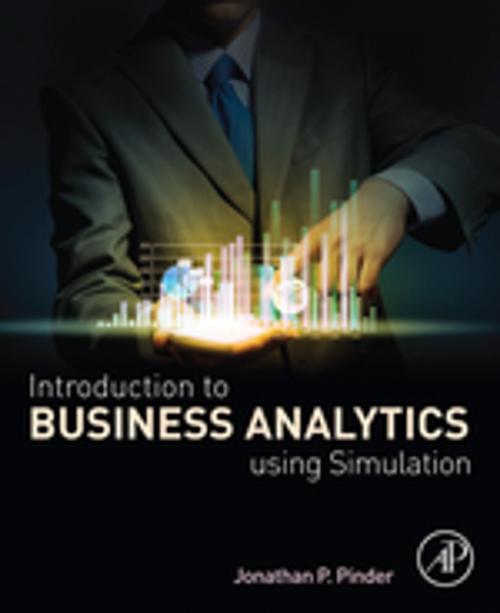| Author: | Jonathan P. Pinder | ISBN: | 9780128104866 |
| Publisher: | Elsevier Science | Publication: | September 3, 2016 |
| Imprint: | Academic Press | Language: | English |
| Author: | Jonathan P. Pinder |
| ISBN: | 9780128104866 |
| Publisher: | Elsevier Science |
| Publication: | September 3, 2016 |
| Imprint: | Academic Press |
| Language: | English |
Introduction to Business Analytics Using Simulation employs an innovative strategy to teach business analytics. It uses simulation modeling and analysis as mechanisms to introduce and link predictive and prescriptive modeling. Because managers can't fully assess what will happen in the future, but must still make decisions, the book treats uncertainty as an essential element in decision-making.
Its use of simulation gives readers a superior way of analyzing past data, understanding an uncertain future, and optimizing results to select the best decision. With its focus on the uncertainty and variability of business, this comprehensive book provides a better foundation for business analytics than standard introductory business analytics books. Students will gain a better understanding of fundamental statistical concepts that are essential to marketing research, Six-Sigma, financial analysis, and business analytics.
- Winner of the 2017 Textbook and Academic Authors Association (TAA) Most Promising New Textbook Award
- Teaches managers how they can use business analytics to formulate and solve business problems to enhance managerial decision-making
- Explains the processes needed to develop, report, and analyze business data
- Describes how to use and apply business analytics software
Introduction to Business Analytics Using Simulation employs an innovative strategy to teach business analytics. It uses simulation modeling and analysis as mechanisms to introduce and link predictive and prescriptive modeling. Because managers can't fully assess what will happen in the future, but must still make decisions, the book treats uncertainty as an essential element in decision-making.
Its use of simulation gives readers a superior way of analyzing past data, understanding an uncertain future, and optimizing results to select the best decision. With its focus on the uncertainty and variability of business, this comprehensive book provides a better foundation for business analytics than standard introductory business analytics books. Students will gain a better understanding of fundamental statistical concepts that are essential to marketing research, Six-Sigma, financial analysis, and business analytics.
- Winner of the 2017 Textbook and Academic Authors Association (TAA) Most Promising New Textbook Award
- Teaches managers how they can use business analytics to formulate and solve business problems to enhance managerial decision-making
- Explains the processes needed to develop, report, and analyze business data
- Describes how to use and apply business analytics software















